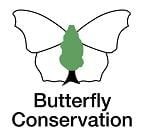Robert J. Heckford (Bob)
Bob is Britain’s foremost micro-lepidopterist, having added enormously to scientific knowledge which has often led to conservation measures. He has added 16 species to the British butterfly list including Ectoedemia heckfordi, which he found new to science. He has also had a Spanish moth, Bryotropha heckfordi, named after him and a fly, Phytomyza heckfordi, which he reared new to Science.
Bob wrote part of volume 4 of ‘The Moths and Butterflies of Great Britain and Ireland’ and was a joint editor of ‘Checklist of the Lepidoptera of the British Isles 2013’. He has published over 230 notes and papers in entomological journals. These journals contain a mine of information about many aspects of Lepidoptera including descriptions and habits of larvae of many species previously unknown in Britain or Europe.
Bob has worked closely with Torbay Coast and Countryside Trust to conserve Infurcitinea albicomella and Coleophora linosyridella, he also worked with the National Trust and BC to conserve Syncopacma suecicella and S. vinella.
One of Bobs many great achievements was when he rediscovered the moth species, Plutella haasi. It was known in Britain from one specimen on Ben Eighe, Scotland in 1954, until 2009 when Bob rediscovered it there and discovered its foodplant, Arabidopsis petraea. He subsequently found many larvae there and at 3 other localities including two new vice counties.














